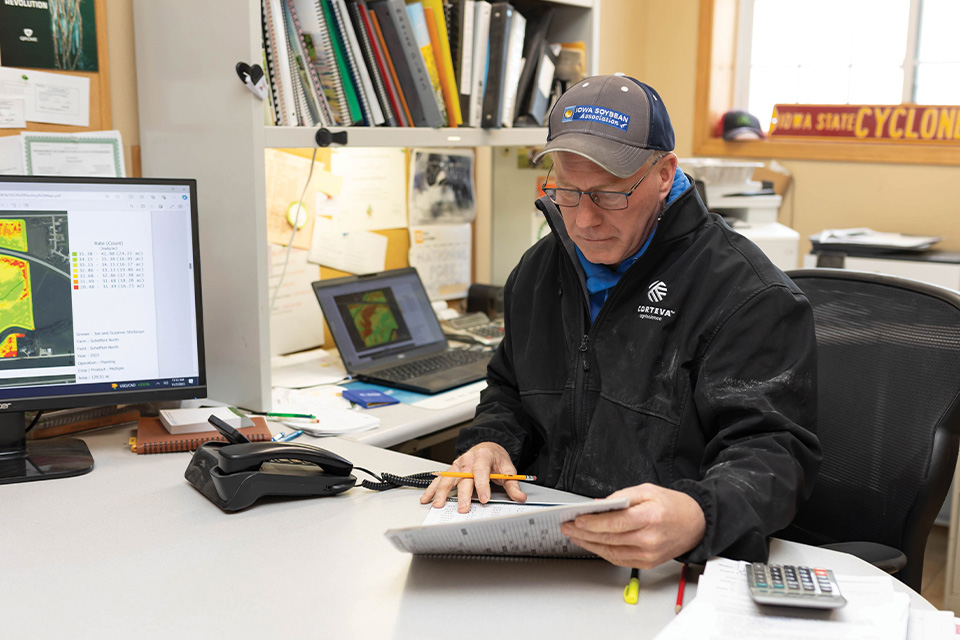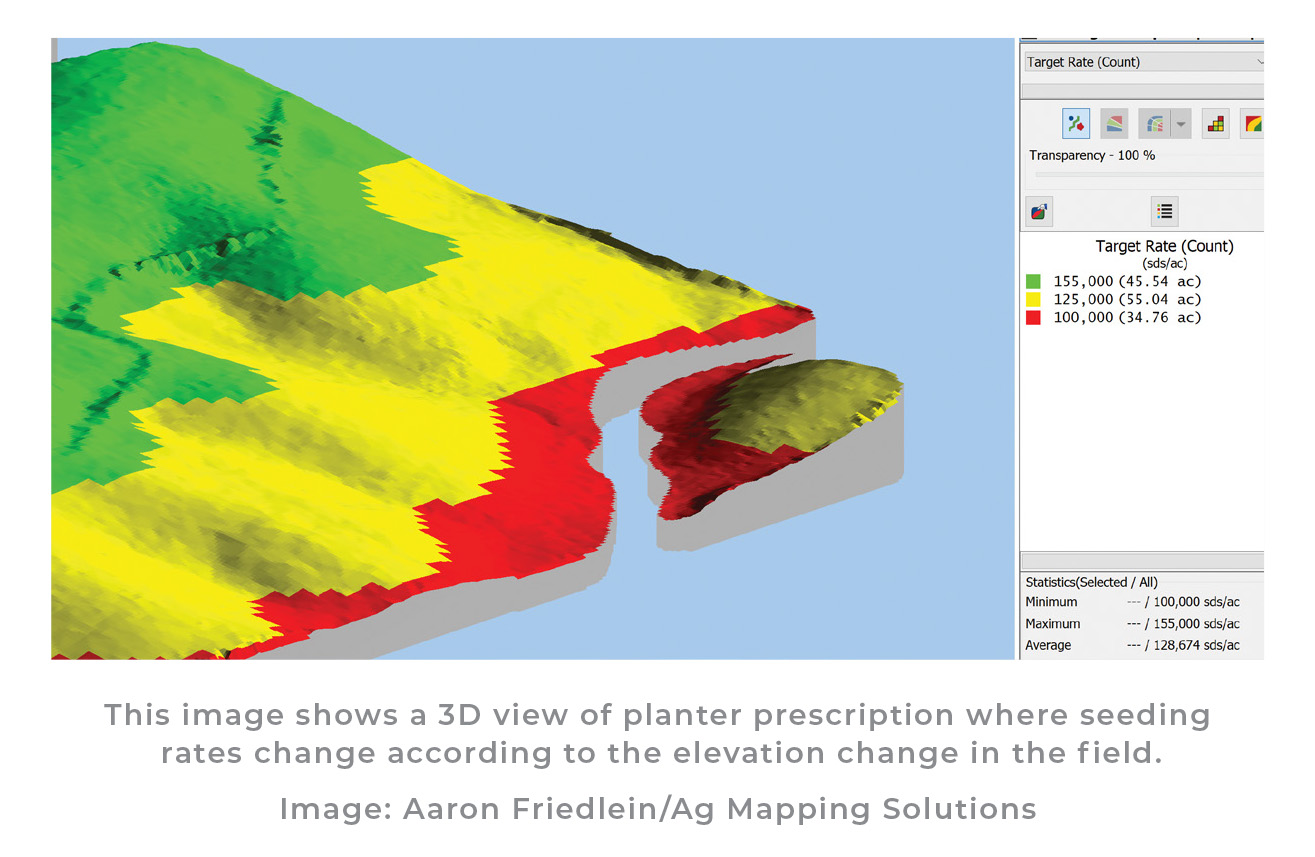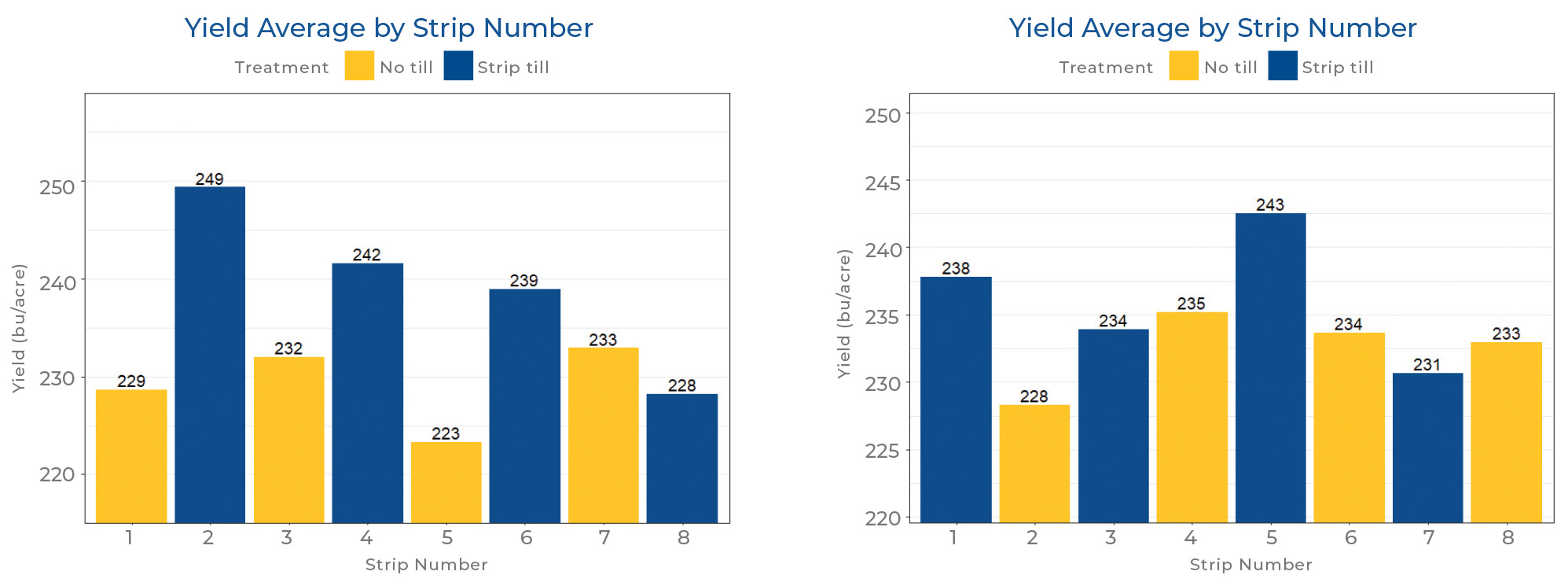
Joe Shirbroun, farmer from Farmersburg. (Photo: Iowa Soybean Association / Joclyn Bushman)
Farmers turn plans into actions
January 11, 2024 | Kriss Nelson
Iowa Soybean Association (ISA) farmer-member Joe Shirbroun from Farmersburg dedicates time and land each year to implement trials.
“I encourage farmers to take two- to three percent of their farm operation and try something you haven’t done before,” says Shirbroun. “Try to get out of that comfort zone and take the challenge.”
By making trials a part of his annual plan, he is able to check the results and decide how to transform those findings into action on his farm.
It’s part of the plan, do, check, act model that ISA’s Research Center for Farming Innovation (RCFI) encourages its farmer participants to adopt.
Acting on results
Shirbroun has implemented a variety of trials on the farm near Farmersburg. One of the most robust trials was researching variable rate seeding. ISA RCFI research agronomists initially encouraged Shirbroun to participate in the variable rate seeding trial to see how seeding rates for soybeans and corn perform in different sections throughout the field.
“They challenged us to try it,” he says. “They wrote the scripts, and we followed them.”
After more than 10 years of participating in this particular trial, Shirbroun now has the data to help make decisions on every acre.
“We looked at our ratio of seed plants per acre versus yield and have learned when we over-apply seed in lower production ground, we tend to get less yield, so we treat those areas with expectations, knowing there will be less output.”
On their family’s farm in the rolling hills of northeast Iowa, Shirbroun makes variable rate planting scripts based on the field’s elevation and past yield history.
“We plant for the ability of the soil’s production level,” he says. “In our low-lying areas, we have to lower our populations because soybeans will favor plant growth and not seed product.”
Soybean seeding populations on the Shirbroun farm range from 100-155,000 seeds per acre; and 24,000 seeds per acre up to 36,000 in corn.
Hybrids' reaction to management practices
To determine how corn hybrids respond to different tillage practices, Wayne Fredericks, now a retired farmer from Osage, conducted a replicated strip trial by planting two different corn hybrids in two different tillage management practices.
Results from the trial summarize how a single hybrid performs in strip-till versus no-till. The two trials were done side-by-side in the same field, making it fair to compare Hybrid A and Hybrid B in both management practices.
Results show Hybrid A went from 236.2 bushels to the acre in strip-till down to 232.5 bushels to the acre in no-till for a total loss of 3.7 bushels to the acre.
Hybrid B went from 239.4 bushels to the acre in strip-till to 229.3 bushels to the acre in no-till for a total loss of 10.1 bushels to the acre.

“Hybrid A performed better in no-till, and Hybrid B performed better in strip-till,” says ISA Research Agronomist Alex Schaffer. “This opportunity would not have been realized without trial work. Wayne wouldn’t have known how best to implement this management change into his operation.”
Schaffer says one theory to consider is that Hybrid A is a defensive hybrid, bred to be a more average stable-yielding hybrid in all conditions. In contrast, Hybrid B is an offensive variety of seed, bred to be a top-yielding hybrid for prime conditions.
The defensive hybrid may do better in cooler, wetter springs — or at least in this tillage trial. Examples of traits that could be included in this hybrid are robustness of seed, resistance to seedling disease, plant architecture where it is more well adapted to collect sunlight at lower population, and is a flex hybrid that will make a bigger ear if they have extra space — if their neighbor didn’t emerge, for example.
Schaffer says the offensive hybrid will take advantage of prime conditions such as warm soils, earlier planting and leaf structure optimized for higher density of plants. Some of these traits could be at the expense of disease resistance, drought tolerance and more, which allow it to yield better in intensive management systems such as conventional or strip-till with high planting density, and with a fungicide application.
“This type of trial is time well spent for a farmer considering a management change,” says Schaffer. “It is not always clear what kind of ripple effect a management change such as tillage can have on the rest of the operation without doing some trial work.”
In this study, if a producer wants to change from strip-till to no-till, it would be worthwhile to switch to Hybrid A.
“Because Wayne made a good plan in his trial setup, we uncovered some statistically sound, reliable results,” says Schaffer.
That’s how the plan, do, check, act model can further research and deliver results to farmers.
“With this information, he can act by making an informed management change and will realize a greater return on investment because he can produce more grain with less fuel and with the right hybrid selection,” Schaffer says.
Let ISA help you plan, do, check and act
RCFI is dedicated to helping farmers with technical assistance to implement new practices in the field or edge-of-field.
“We are here to work with growers to conduct research on their farm and to develop a large enough data set to help all Iowa farmers adopt new practices that will drive them to be more profitable, productive and sustainable,” says Schaffer.
With the continued support of ISA’s RCFI team, Shirbroun is looking ahead to trial opportunities this spring.
He has worked with biologicals for two years and is considering adapting some biologicals to assist in nutrient cycling.
“As we look ahead in agriculture, biologicals are a buzzword,” Shirbroun says. “I think we will have to challenge ourselves to try.”
Back